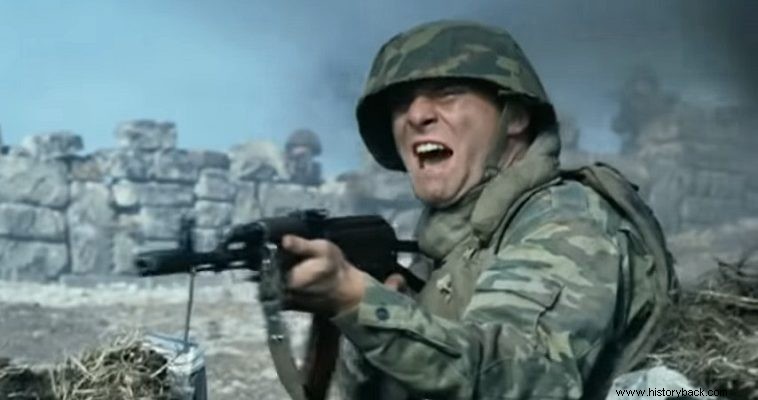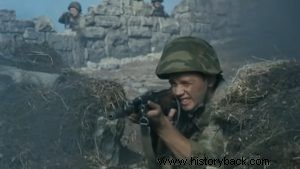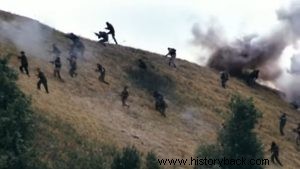
In late February 2000 Russian armed forces attempted to surround and destroy a strong force of Chechen rebels retreating from the Chechen capital of Grozny. The rebels had captured Grozny, humiliating Russia. In fact, the rebels managed to escape from the city unmolested. It was a matter of prestige for Moscow to exterminate them.
On February 29, 2000, a few hours after the Russian Defense Minister assured that the war in Chechnya was over, a Russian force was surrounded by the Chechens. It was a paratrooper company of the 104th Guards Airborne Regiment of the 76th Guards Airborne Division. The Russian tactical group was tasked with cutting off the Chechen retreat in the area of Hill 776 , so as to give time to stronger Russian forces to surround them and exterminate them in the area of the village of Oluch Kert.
The Russian 6th Company of the 2nd Battalion, commanded by Lt. Col. Mark Nikolayevich Geftyukin . Geftyukin was the commander of the 2nd Battalion but he personally took command of the company due to the seriousness of the situation. He was accompanied by the company commander, Major Molodov and a platoon of scouts and the forward artillery observer (ADO) Captain Romanov .
Surprise
At dawn on the 29th, the fog covered the area like a thick veil. The Russians were carelessly having their breakfast without taking any safety measures. Thus they did not perceive the advance of their opponents and were attacked in their rear by a reconnaissance unit of 20 Chechens. It is worth noting that many foreign Islamic fighters were also fighting alongside the Chechens.
Hordes of Chechens soon appeared – sources say 500 to 2,000 fighters. The Russians were only 91. Soon the few Russians found themselves surrounded. However, the initial surprise cost them a lot of blood. Among the dead was Major Molodov. The surviving Russians took up defensive positions on Hill 776 in a ruined building and prepared to "sell" their lives dearly.
The Russians were supported by the fire of 2S9 Nona 120mm light howitzers Also two Mil Mi-24 attack helicopters were ordered to provide fire support but upon receiving fire from the Chechens the helicopters withdrew. The only reinforcement the Russians received was a platoon of 14 men from the 3rd Company. Attempts of the other companies of the 2nd Battalion to break the line of the Chestenes and open a way to their surrounded colleagues, failed.
However, the besieged fought heroically, killing hundreds of Muslims. At some point the squadron of self-propelled howitzers received the last message from PPP Captain Romanov. Romanov, badly wounded, blowing his spears, called for firing on the positions of the 6th Company, which means that the enemy had now penetrated the positions of the defenders.
The battle ended on March 1 when 84 of the 91 Russians had fallen dead. In contrast, the brave few killed 400 to 700 Muslims. (number varies by source). Only seven Russians survived, managing to slip away. Of these, four were injured.
The battle was a heroic one, but a defeat for the Russians. An uproar ensued. Public opinion demanded the heads of the leadership of the Russian armed forces, especially after the fact that, officially, they lied to cover up the disaster. And the Kremlin, which was home to then-newly elected president Vladimir Putin, also reported that the Russian dead were 31. After a few days, however, they were forced to tell the truth.


